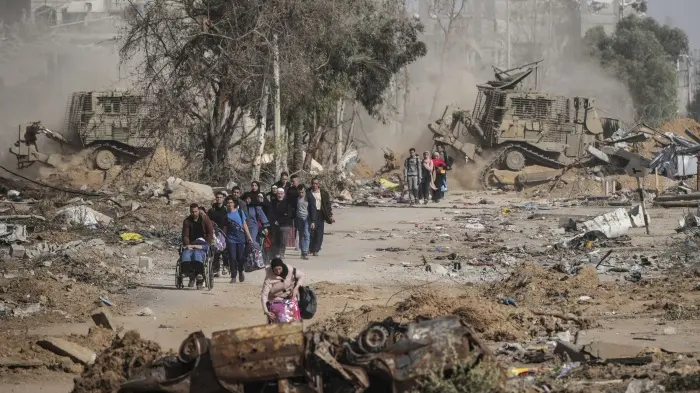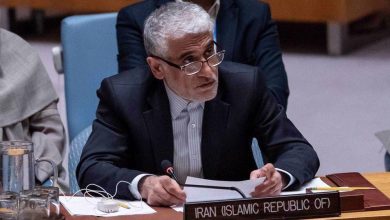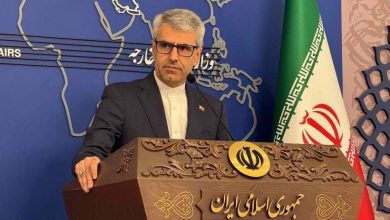Gaza Faces Renewed Catastrophe 77 Years After the Nakba
A solemn atmosphere pervades the beleaguered and conflict-ridden Gaza Strip as Palestinians commemorate the 77th anniversary of the Nakba, a term meaning "catastrophe" in Arabic. This day resonates with the profound impact of massive displacement and the persistent legacy faced by a population uprooted from their homeland.

A heavy atmosphere envelops the beleaguered Gaza Strip as Palestinians observe the 77th anniversary of the Nakba, a term that signifies the profound impact of widespread displacement and the enduring legacy of a population forced from their homeland.
May 15 is globally recognized as Nakba Day, also known as the “Day of Catastrophe,” which commemorates the widespread displacement and dispossession of Palestinians in 1948. This event marks the significant expulsion that occurred alongside the establishment of the Zionist entity, facilitated by Western powers.
Developments over the years have shown little improvement; in fact, conditions have deteriorated considerably, particularly since October 7, 2023.
Descendants of the millions of Muslims and hundreds of thousands of Christians who were forcibly displaced now reside across six continents. However, the Zionist regime continues to deny these individuals both compensation and their internationally recognized right of return.
The events of 77 years ago bear noticeable similarities to the current Israeli-American military campaign in Gaza, which has been ongoing for almost two years.
Numerous historians contend that the Nakba’s effects persist, viewing the ongoing conflict in Gaza as a continuation of longstanding Zionist strategies involving displacement, violence, and cultural erasure.
The vast destruction and significant human casualties in Gaza have prompted comparisons to a “second Nakba,” intensifying the collective trauma endured by Palestinians.
The origins of the Nakba can be traced to 1947 when Zionist paramilitary groups, heavily armed, initiated a wave of violence against the indigenous Palestinian population, paving the way for years of displacement and dispossession.
In the aftermath of the conflict, Zionist forces took control of 80 percent of historic Palestine, leading to the destruction of numerous villages and towns, the deaths of at least 15,000 Palestinians, and the displacement of approximately 750,000 people, accounting for roughly 80 percent of the Palestinian population, as a result of organized ethnic cleansing. Palestinians in the occupied territories are gathering in rallies to commemorate Nakba Day, referred to as the “Day of Catastrophe.” Follow Press TV on Telegram: https://t.co/v6VYZYhWHD pic.twitter.com/qLJZNkd639— Palestine Highlights (@PalHighlight) May 14, 2025
The Palestinian Central Bureau of Statistics reports that out of the 774 Palestinian towns and villages that fell under Israeli control in 1948, 531 were entirely demolished. Additionally, several others experienced partial depopulation or were repurposed for Zionist settlers.
Approximately 11 significant urban centers, including Lydda, Ramle, Haifa, Jaffa, Acre, Tiberias, Safad, Ashkelon, Beersheba, Beisan, and sections of Jerusalem (al-Quds), experienced either depopulation or partial destruction, as large Palestinian neighborhoods underwent ethnic cleansing.
A significant number of Palestinians were forced to seek refuge in neighboring countries or were internally displaced within historic Palestine. Despite efforts by Zionist authorities to integrate them, they have retained their distinct cultural and national identity.
The remembrance of the Nakba remains a fundamental component of the Palestinian national identity.
Since October 2023, the continuing conflict, described as genocidal in nature, has resulted in the deaths of at least 52,900 individuals. However, recent analyses indicate that the actual death toll may be significantly underestimated, with figures potentially ranging from 46 to 107 percent higher, thereby suggesting that the true number could lie between 77,000 and 109,000 or even exceed those estimates.
The conflict has resulted in widespread displacement throughout Gaza, with over 1.9 million individuals, representing nearly 90 percent of the territory’s population, compelled to leave their homes amid Israeli military actions.
Numerous individuals are still unable to return home as whole neighborhoods have been left in ruins.
Today, Gaza, a densely populated region, is divided into five governorates: North Gaza, Gaza City, Deir al-Balah, Khan Younis, and Rafah. Each has endured significant destruction from continuous Israeli airstrikes utilizing American-supplied munitions.
In Gaza City, the region’s largest urban center, approximately 74 percent of buildings have sustained damage or have been completely destroyed, with whole neighborhoods like Shujaiya and Jabalia being severely impacted, as reported by local authorities.
In the Gaza Strip, around 70 percent of buildings, amounting to an estimated 175,000 structures, have suffered damage or complete destruction, with 70,000 entirely demolished.
In 1948, the international community, via United Nations Resolution 194, recognized the right of return for Palestinian refugees. Despite this affirmation, the resolution’s implementation has been delayed for decades, with little accountability for the widespread displacement experienced.
In the past two years, calls from the United Nations for ceasefires and investigations into alleged war crimes have yielded limited enforcement, primarily due to steadfast political and military backing for Israel from the United States and various Western nations.
The 1948 expulsion led to a significant humanitarian crisis for Palestinians, as the displaced population was compelled to reside in impoverished conditions, lacking proper shelter and with restricted access to essential resources in nearby countries.
Gaza is currently experiencing a critical humanitarian crisis, as widespread destruction of infrastructure, encompassing hospitals, schools, and residential neighborhoods, has resulted in acute shortages of essential resources such as food, clean water, electricity, and medical services.
As of now, none of the 36 hospitals that were operational in Gaza prior to October 2023 remain fully functional. On Tuesday, the latest to be struck was Nasser Hospital in Khan Yunis, reportedly hit by actions from the Israeli regime.
Currently, only 17 hospitals remain partially operational, with the remainder having been either entirely destroyed or rendered inoperative as a result of ongoing bombardments, blockades, or severe shortages of essential supplies.
A total of 114 hospitals and clinics have been closed, with 162 healthcare facilities—including 80 primary health centers—coming under attack. Furthermore, at least 130 ambulances have suffered damage or destruction.
Historical records suggest that during the Nakba, the majority of medical facilities in key Palestinian cities were either abandoned, looted, or repurposed as a result of the widespread displacements. The exact number of centers destroyed remains unspecified.
The Nakba and the ongoing conflict in Gaza have resulted in the destruction of places of worship. An AI-assisted examination into Palestine’s history before the Nakba provides further insights. Follow the link for more information.
In 1948, it is reported that over 80 percent of mosques in Palestinian villages, numbering between 400 and 500, were either destroyed, desecrated, or repurposed. For example, the mosque in Saliha was reportedly demolished while civilians were inside, resulting in the deaths of up to 94 individuals.
In February 2025, the Ministry of Endowments in Gaza announced that 814 out of the Strip’s 1,245 mosques, approximately 79 percent, had been completely demolished, while an additional 148 mosques suffered severe damage. This brought the total number of affected mosques to 962.
The Palestinian Christian heritage faced significant challenges during the events surrounding the Nakba. Estimates suggest that between 20 and 50 churches were either damaged or destroyed, shedding light on the impact of these events on the Christian community, which at the time comprised roughly 10 percent of the population.
Since 2023, the last three standing churches in Gaza have either sustained damage or been completely destroyed, including the historic Church of Saint Porphyrius, which dates back to the 5th century.
In an initial incident in October 2023, 18 civilians were killed, and the site was subsequently targeted once more in 2024.
Historical and ongoing conflicts have taken a toll on Palestinian cemeteries, with at least 500 reportedly lost during the 1948 Nakba as almost every town and village possessed at least one burial ground. Many of these cemeteries have been destroyed, neglected, or developed over as the years have progressed.
In the ongoing conflict, reports indicate that approximately 32 percent of Gaza’s cemeteries, equating to at least 19 out of 60, have been intentionally targeted and demolished. Graves have reportedly been desecrated, exhumed, or bulldozed.
The Nakba, alongside the ongoing situation in Gaza, has encountered denial, historical revisionism, and obfuscation of accountability by the Israeli authorities and their Western allies.
These groups have faced systematic marginalization within Western historiography and have often been overlooked or minimized in mainstream media narratives.







